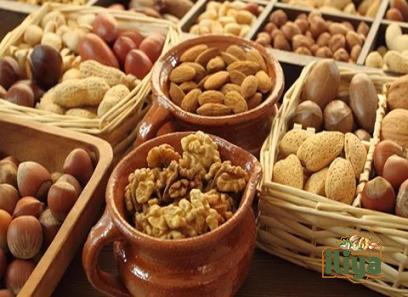Turkish nuts, a treasure trove of exotic flavors and nutritional wonders, have been gracing tables and tantalizing taste buds for centuries.
From pistachios to hazelnuts, Turkey boasts a rich tapestry of nuts that are renowned for their unique taste, versatility, and health benefits.
In this comprehensive guide, we delve into the fascinating world of Turkish nuts, exploring their origins, varieties, culinary uses, and the numerous health advantages they offer. Join us on a culinary adventure as we uncover the hidden gems of Turkish nuts and discover why they are cherished by food enthusiasts worldwide.

.
 Pistachios, one of Turkey’s prized nuts, are predominantly grown in the southeastern provinces, such as Gaziantep and Sanliurfa.
Pistachios, one of Turkey’s prized nuts, are predominantly grown in the southeastern provinces, such as Gaziantep and Sanliurfa.
These areas are renowned for their high-quality pistachios, known for their vibrant green color, rich flavor, and nutritional value.
The unique climate and soil composition in these regions contribute to the exceptional quality of Turkish pistachios, making them a sought-after delicacy in both domestic and international markets.
Another popular Turkish nut is the hazelnut, which is predominantly cultivated in the Black Sea region, particularly in the province of Ordu.
Turkey is one of the leading producers of hazelnuts globally, with the majority of its production centered in this region.
Turkish hazelnuts are prized for their rich, buttery flavor and crunchy texture, making them a versatile ingredient in both sweet and savory dishes.
In addition to pistachios and hazelnuts, Turkey is also known for its production of walnuts, almonds, and chestnuts, all of which contribute to the country’s diverse nut industry.
These nuts are grown in various regions across Turkey, each offering unique flavors and characteristics that add depth to the culinary landscape of the country.
..
 Buying and Storing Turkish Nuts
Buying and Storing Turkish Nuts
When purchasing Turkish nuts, it is essential to look for high-quality, fresh nuts to ensure optimal flavor and nutritional value.
Here are some tips for buying and storing Turkish nuts
1. Freshness: Look for nuts that are plump, well-formed, and free from cracks or blemishes.
Fresh nuts will have a vibrant color and a crisp texture, indicating that they are at the peak of their freshness.
2. Packaging: Choose nuts that are stored in airtight containers or sealed packaging to protect them from light, moisture, and air exposure, which can cause them to spoil quickly.
Avoid purchasing nuts from bulk bins unless they are well-covered to maintain freshness.
3. Storage: To extend the shelf life of Turkish nuts, store them in a cool, dark place away from heat and humidity.
Nuts can be stored in a pantry or cupboard for short-term use or in the refrigerator or freezer for long-term storage.
Make sure to seal the nuts in an airtight container or resealable bag to prevent them from absorbing odors and losing their flavor.
4. Roasting: You can enhance the flavor and texture of Turkish nuts by roasting them before use.
Simply spread the nuts in a single layer on a baking sheet and roast them in the oven at a low temperature until they are fragrant and golden brown.
Roasting nuts intensifies their nutty flavor and adds a crunchy texture to dishes.
5. Grinding: Turkish nuts can also be ground into a fine powder or paste to use as a base for sauces, dips, and desserts. U
se a food processor or blender to grind the nuts to your desired consistency, adding a creamy and nutty element to your culinary creations.
…
 Whether enjoyed as a snack, incorporated into savory dishes, or featured in decadent desserts, Turkish nuts continue to inspire creativity in the kitchen and delight the senses with their delightful flavors and textures.
Whether enjoyed as a snack, incorporated into savory dishes, or featured in decadent desserts, Turkish nuts continue to inspire creativity in the kitchen and delight the senses with their delightful flavors and textures.
So, explore the vibrant world of Turkish nuts, savor their exotic tastes, and embark on a culinary journey filled with tradition, authenticity, and gastronomic pleasures.











Your comment submitted.